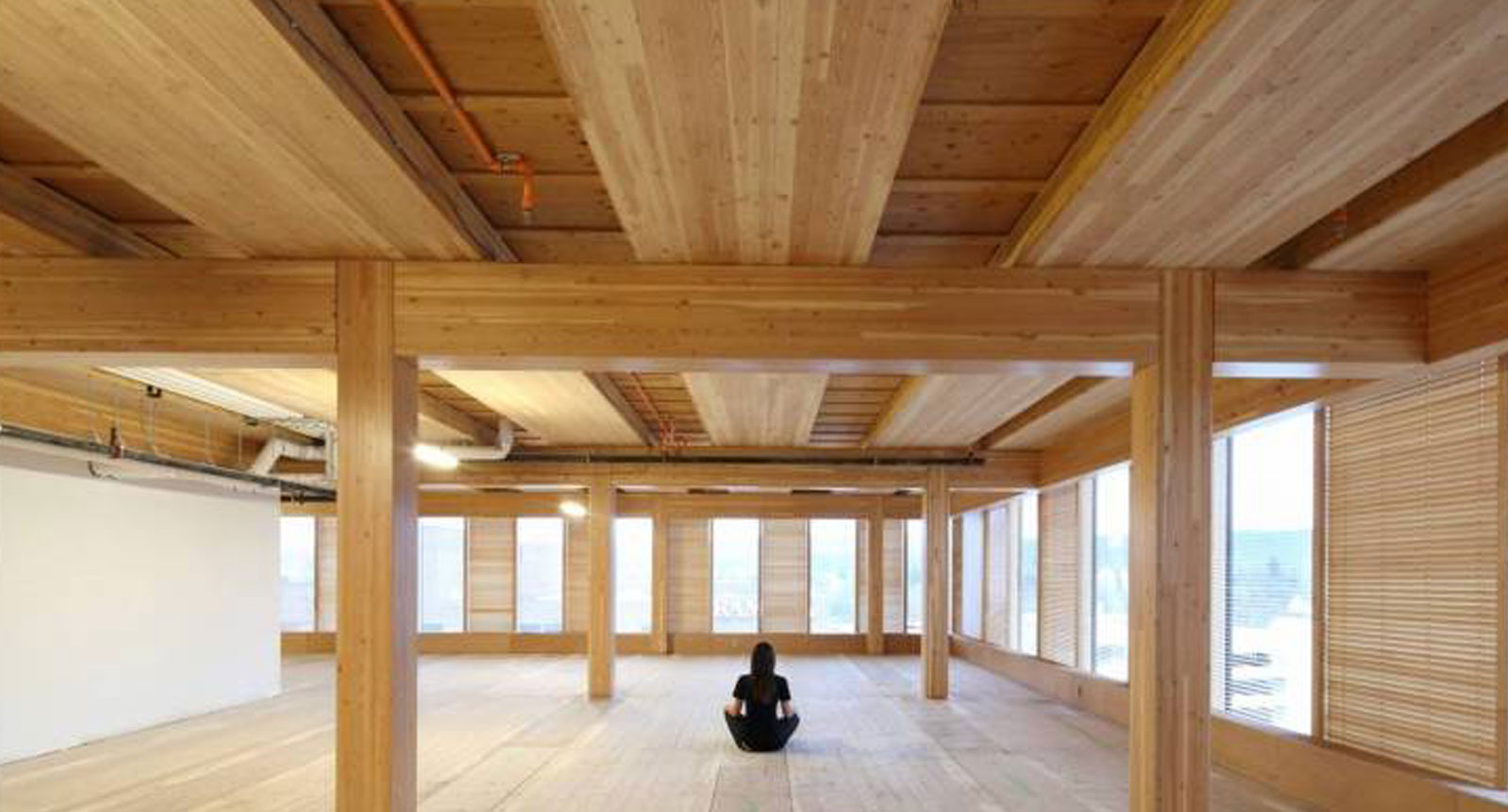
Mass timber has captured the imaginations of architects and builders. Supporters argue that mass timber can replace steel and concrete in construction, reducing carbon pollution from those sectors. In addition, mass timber can use smaller diameter logs, potentially creating a market for products from forest restoration and fuel-load reduction harvests. Yet to achieve these worthy objectives, wood for mass timber must come from responsibly managed forests. Without explicit efforts focused on sourcing, there is no assurance that conventional forest products will yield climate-smart mass timber.
Mass timber refers to buildings where “the load-bearing structure is made of either solid wood or engineered wood,” according to Andrew Tsay Jacobs, director of the Building Technology Lab at Perkins + Will. Cross-laminated timber (CLT), glued-laminated timber (glu-lams), dowel-laminated timber (DLT), and nail-laminated timber (NLT) can all bear structural loads in a building, meaning they are all mass timber products.
By replacing structural steel and concrete, the argument goes, mass timber can reduce carbon emissions from construction materials. 5 percent of global greenhouse gas emissions come from concrete manufacturing and another 5 percent comes from steel. Yet recent research by engineering firm Arup in “The New Carbon Architecture,” found that “the final life cycle emissions of the timber design could arrive very close to the final emissions of the concrete design option if both worst-case sourcing and worst-case transport scenarios were realized.” In other words, mass timber can be a climate solution as long as the wood is sourced from a local, responsibly managed forest.
What does climate-smart forestry look like? Recent research by Ecotrust and the University of Washington suggest an answer: “FSC certification is a good surrogate for ensuring additional carbon storage” in forests. This makes sense, as application of FSC’s Forest Management Standard tends to extend rotation lengths, increase buffer widths around waterways, reduce opening sizes (resulting in more soil moisture in the forest) and restrict carbon-intensive chemical use. All of these factors, and others, shape the carbon benefits of FSC-certified forests.
Of course, no two forests are identical. Yet FSC is widely recognized as the world’s most trusted forest certification exactly because of the differences it requires on the ground. And these differences are not only good for carbon storage, they also benefit wildlife, water quality and local communities.
How can you find FSC certified mass timber? Easy, just visit the FSC Wood Finder, which was developed collaboratively with our partners at Northwest Natural Resource Group. Part of an Eco-Friendly Builder’s Guide, the FSC Wood Finder is quickly developing into a powerful tool to help architects, engineers and builders specify and source FSC-certified products. If you want to add your FSC-certified company into the FSC Wood Finder, simply complete this questionnaire for vendors of FSC-certified wood products.
Article provided by ca.fsc.org, Achieving the Promise of Mass Timber with FSC Wood, March 26, 2019.
View PDFs, videos and measurement formulas all pertaining to your needs.
VIEW MORE
© Copyright 2024 Innovasium UCS Forest Group. All Rights Reserved. Privacy | Accessibility
Our Commitment to Accessibility
UCS Forest Group is committed to ensuring that every employee and customer receives equitable treatment with respect to employment and services, without discrimination, and receives accommodation where required, in accordance with the provisions of the Code and the AODA and its Regulations. UCS Forest Group will meet the accessibility needs of persons with disabilities in a timely manner.